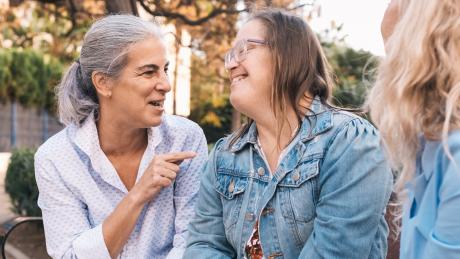Abstract:
The transition from career to retirement can be a time of tremendous opportunity, growth, frustration, disappointment, and everything in between. Despite the necessary adjustments, individuals can and do display resilience, or an ability to adapt despite challenging circumstances. This article explores aspects of this transition to retirement including finances, emotions, and more, through the lens of a resilient retiree. Additional areas of future research are outlined and discussed.
Key Words:
retirement, resilience, aging, coping
Retirement, either the experience of exiting the working world altogether, or leaving one’s main career to pursue part-time work, is a transition involving endings as well as beginnings, and the potential for new pursuits. Whether learning new skills, finding new meaning in life, building or maintaining relationships with friends, family, and community, retirement brings challenges as well as opportunities (Murakami, 2021).
Individuals considering retirement can benefit from assessing and enhancing their personal capacity for resilience. Resilience is seen as a combination of internal factors including positive attitude, effective coping skills, and healthy thinking, plus external factors such as choosing to engage in hobbies, maintaining relationships through a strong support system, and making use of available resources (American Psychological Association [APA], 2012; Brandan et al., 2013; Hayman et al., 2016).
Resilience is described not as a distinct personality trait that only some possess, rather it involves actions, behaviors, and thoughts that people of any age can learn and develop (APA, 2012; Bonnano, 2004). In retirement, a resilient person might be more apt to view the experience as an opportunity, rather than a threat (Brandan et al., 2013). Research has shown that one’s ability to have control over the decision, timing, and process of retirement occurs more often with resilient individuals (Hildon et al., 2008). Historically, most dialogue around retirement has focused on the financial aspects, though in the past decade the academic literature and mainstream media have added a focus on psychological aspects of retirement as individuals are likely to experience some psychological impact due to retirement (Osborne, 2012). The focus of this article is on experiences of retirement through the lens of resilience, providing steps individuals can take to build resilience prior to and throughout retirement, to achieve the most positive transition possible as they enter the later and final periods of their lives.
Pre-retirement Considerations
Before an individual retires, it is vital to consider available resources, which may include finances, an adequate support system and community, and access to local resources to maintain physical and emotional well-being.
Location
In preparing for transition into retirement, people face decisions about where to live, especially if their retirement income will not sustain their current living situation or lifestyle. As part of this decision-making experience, they should consider if the space in which they hope to live can accommodate changing healthcare needs as they age. Many older adults prefer to “age in place,” remaining in their home for as long as possible. But the ability to age in place is affected by many connected factors such as affordability, safety, stability, access to medical providers or dentists, and transportation options (Finlay et al., 2019).
'Only about half of households approaching retirement age in the United States have any retirement savings.’
For some, a move into a setting such as a Continuing Care Retirement Community (CCRC), or Residential Long-Term Care (RLTC) such as assisted living might best meet their physical, emotional, social, and medical needs. But people considering retirement should visit their preferred locale to ensure its ability to meet their ongoing needs. A move into another dwelling is an additional, potentially stressful transition compounding the experience of retirement. Also, a move into a CCRC or RLTC requires considerable preparation, time, and financial investment. Resilience in this instance might include adaptability, flexibility, and creative problem-solving to prepare for future care needs. While a move into a communal setting might feel like a last resort for some, it can also bring enhanced independence, health, and reduced isolation.
Finances
Financial realities of preparing for retirement can take time and expertise beyond what an individual may possess. Meeting with the HR department at their workplace can ensure the process of transitioning to varied or reduced income will still meet their needs. Financial planners also are helpful for insights into the best financial practices in late life, as they can be a valuable, cost-effective, and underutilized resource.
It is important to consider the reality that only about half of households approaching retirement age in the United States have any retirement savings (Munnell & Chen, 2021). For those with retirement savings, depending on the income from such accounts can be challenging due to fluctuating and currently low interest rates (Munnell & Chen, 2021). Considering COVID-19 and its effect on the economy and subsequent recession, the 401k system, though minimally affected, still has all the problems that existed before the pandemic (Munnell & Chen, 2021).
For some who are planning for retirement, the future might include part-time work, either for financial or health-related reasons such as an interest in maintaining a specific skill or goal. In any scenario, when building resilience and capacity to navigate the financial considerations of retirement, an individual benefits from exploring their relationship with money in general (saving and spending habits up to this point), as well as feelings around dipping into savings to maintain their lifestyle going forward. This would likely involve a conversation with one’s spouse, partner, or adult children, as well as a counselor or financial planner.
The Role of Choice in the Decision to Retire
In their study of resilience, adversity, and aging, Hildon et al. (2008) found a sense of control over the transition of retirement was a major theme, particularly for resilient outcomes. Even with people who actively make the choice to retire, choosing between many options can be stressful and there can be pressure to positively shape the remainder of their lives and continue to find meaning despite not working (Osborne, 2012). In this instance, resilient individuals embrace their connection to their hopes, dreams, plans, and inner thoughts, as well as their values, and trust that as they have made other positive choices in the past, they will continue to make positive choices during this transition. Resilience in decision-making would also include the ability to adjust as needed along the way (Osborne, 2012).
For those who were not choosing whether or not to retire, due to myriad reasons such as forced retirement because of age, COVID-19 considerations, or otherwise, the transition to retirement can bring additional challenges and a feeling of a loss of control (Hildon et al, 2008; Statz, Kobayashi, & Finlay, 2022). Older workers who want to continue working face challenges in finding a new job and may be forced to retire early as a result (Munnell & Chen, 2021).
Maintaining a sense of connection to others who can provide socialization and support can reduce isolation and increase resilience.
The extent of the impact of COVID-19 on retirement will be felt for many years. According to Faria e Castro (2021), the United States experienced slightly more than 2.4 million excess retirements due to the pandemic, which is calculated as the difference between predicted retirements based on age, and the number of retirements that occurred. Ultimately, the individuals who have suffered the most from the economic recession and subsequent retirement are individuals with less education (Munnell & Chen, 2021). Some have described their sudden and unchosen exit from the workforce as difficult, from losing the freedom to work, rather than the common assumption that individuals who retire are seeking the freedom from work (Hildon et al., 2008).
In any scenario, retirement-related or otherwise, humans value the ability to be active participants in decision-making and having choice over what happens in their lives. Resilience in the face of forced retirement for any reason might include the ability to tolerate the discomfort and anxiety, acknowledging the loss and the impact on their life, and seeing this challenge through the eyes of opportunity. This might include a mindset shift: from spending years of doing what you “need to” to now doing what you “want to,” including things you could not do previously due to work demands (Erikson, et al., 1986).
Physical Well-Being
Individuals considering retirement can set themselves up for success by maintaining their physical health through preventive healthcare visits and regular screenings. Awareness of family history of medical issues and a preparation for future healthcare expenses is vital as these costs can escalate in later life and the ability to plan ahead can take the pressure off already stressful situations. For some, a transition into retirement can improve health (Hildon et al., 2008). People hoping to build resilience in physical health would adequately manage chronic health conditions, plan ahead for end-of-life choices such as life-sustaining measures (resuscitation, intubation, dialysis, etc.) and for a funeral, as well as maintaining regular healthy living habits such as diet, sleep, and exercise.
Emotional Well-Being
Maintaining a sense of connection to others who can provide socialization and support such as friends, family, neighbors, and co-workers can reduce the likelihood of isolation following retirement and increase resilience (Hildon et al., 2008). For retirees who live with a spouse or partner, it can be helpful to consider how a change in working routines and schedules may impact the relationship (Osborne, 2012). More time at home offers opportunities for increased connection as well as potential conflict. For many couples there is a tension between dependence and independence, and a changing dynamic throughout the relationship, which can be heightened in the face of retirement (Osborne, 2012). Having proactive conversations in advance of retirement can lay the foundation for effective communication and mutually satisfying connection throughout the transition.
Another resource available to retirees is to maintain relationships with co-workers, colleagues, or customers, as these relationships transition more toward friendships. Considering how these changing relationships may continue following a transition out of the workplace can provide ongoing connection as relationships are fostered through a mutual interest in each other as individuals, rather than focusing on a shared common goal such as projects or deadlines at work. For retirees who thrive with shared projects and goals, a proactive, resilient approach to retirement might include seeking out opportunities in one’s community such as a neighborhood association, or other groups united around a shared cause.
During Retirement
Emotions
Retirement can bring a mixture of expected and unexpected emotions (Osborne, 2012). Individuals may experience excitement, satisfaction after many decades of working, pride, gratitude, happiness, and optimism. Some people describe a sense of relief, especially in situations with work or health-related stress, retirement can bring about recovery (Hildon et al., 2008; Osborne, 2012). Others may feel a sense of fear, disappointment, loneliness, or frustration, especially if retirement does not go according to plan.
Retirement age can include the onset of acute or chronic health concerns for an individual, spouse, or partner, or other family and friends. Older adults might find themselves caregiving for another person in need. Also common in this part of the life course is the death of a spouse or friend, which can further compound a sense of loss.
In the larger experience of day-to-day life during retirement, myriad emotions can and will be experienced, even moment to moment. Resilience in this instance means noticing, acknowledging, honoring, experiencing, and moving forward through emotions, including those that are positive. This is where supportive communities come in, to provide emotional and practical support as the person’s needs change over time.
Grief
A common experience is having a sense of grief and loss throughout the retirement experience. While the loss of productivity and meaningful work are most commonly thought of when considering the retirement transition, there can be other, more ambiguous losses that occur. Ambiguous losses are losses that are unclear and at times unresolvable (Boss, 2020). Ambiguous loss in retirement might mean a person feels that they have lost a part of themselves when they quit working, yet still feel capable of doing that same work despite choosing not to. Ambiguous losses can be challenging in that they can feel like two emotions are in conflict. Another loss retirees might experience would be disenfranchised losses. These losses are generally not socially acknowledged nor validated (Doka, 2020). Disenfranchised loss in retirement occurs when a person feels disappointed, frustrated, or lonely when society tells them they should be feeling relaxed, free, and relieved because they are no longer working. There can be an expectation that retirement should be “bliss” and the experience of feeling isolated or bored does not fit the cultural narrative and might contribute to a feeling of loss that peers may not understand or acknowledge.
‘A key aspect of overall resilience is the ability to cope despite adversity.’
Other areas of grief and loss in retirement include a loss of a sense of productivity, connection, or purpose. In all areas, preparation for the emotional and practical experience of retirement is key. Resilience might mean ceasing to identify being productive as the main source or meaning or purpose—essentially moving from “doing” to “being.” A lost sense of purpose can be tied to a sense of loss or changing of identity more broadly. Individuals in retirement have an opportunity to “reclaim” themselves in ways that may not have been possible during working years.
It also can be helpful to explore thoughts around one’s possible self and create the life that may not have been possible when so much time was spent working (Erikson, Erikson, & Kivnick,1986). Resilient individuals tend to use “I always” types of phrases, emphasizing a continuity in their identity throughout their lifetime, not tied specifically to production or work identities (Hildon et al., 2008). These people are more apt to find ways to continue in roles or activities that they participated in prior to retirement, and continue a sense of mastery (Hildon et al., 2008).
Routine
A significant experience in retirement is the potential loss of a sense of routine or structure in one’s life. This particular loss and subsequent adjustment can be connected to the concept of an internal or external locus of control (Krause & Shaw, 2000). For many individuals, routines pre-retirement were predicated by external factors such as work or school schedules. The decisions of when to get out of bed, when to have lunch, and what time was left for hobbies or leisure were determined by external demands on time. In retirement, routines transition from an external control to internal, where the individual can self-generate parameters around their time, energy, and day. This could bring a sense of disorientation as well as opportunity.
Hildon et al. (2008) found that between the resilient and vulnerable categories, only the vulnerable category saw retirement as an adversity, mostly because their routines had been interrupted. Ultimately, routines that were rigid or lacked autonomy or flexibility determined how adverse the experience of retirement felt for those individuals (Hildon et al., 2008). For goal-oriented individuals, setting daily or weekly goals can be helpful to build a sense of accomplishment. Resilience in the face of a loss of routine or structure might include flexibility, adaptability, flexible problem-solving, and ultimately seeing the lack of structure provided by a work schedule as an opportunity rather than a threat and being creative in planning how to use time.
Coping
A key aspect of overall resilience is the ability to cope despite adversity (Hildon et al., 2008). Brändstadter, Rothermund, & Schmitz (1997) describe two types of coping: assimilative and accommodative. Assimilative coping includes hands-on activities to prevent or alleviate age-related losses. In contrast, accommodative coping entails adjusting and readjusting one’s personal goals and ambitions. Their study found that when comparing older adults to a younger cohort, older adults were more apt to demonstrate an accommodative coping style when dealing with adversity (Brändstadter, Rothermund, & Schmitz). Similarly, Osborne (2012) explained objective well-being as what happens to people, and subjective well-being as how an individual interprets their experience. It is important for individuals in retirement to find a balance between external and internal ways of coping with change.
Mortality
The reality of having limited time left—a sense of having more time behind than ahead in one’s life—can coincide with retirement. This can cause pressure to make the most of the time one has left, given the anticipation of future decline and death (Statz et al., 2022). In this case, it can be helpful to renegotiate one’s relationship with time (Ambler & McCoyd, 2009). This might include performing a life-review exercise to reflect on one’s past accomplishments and setting goals for how to spend one’s time in the future.
Bozarth (1994) describes finding joy in a dream-come-true just as in a dream-coming-true. In other words, having a sense of peace and satisfaction as one reflects back upon one’s life can be helpful, while living fully in the present and anticipating the decreasing time ahead. Resilience could include leaving a legacy by doing generative tasks such as establishing a college fund for a grandchild or young neighbor in an effort to have a lasting positive impact after death. Seeing things as they are and seeing things as they could be, even after the individual has died is a resilient approach to acknowledging one’s mortality and finding purpose and meaning in the impact one can leave despite death.
Future Areas of Research
Areas for additional study and discussion related to experiences of retirement and enhancing resiliency include a focus on assessing the impact of systemic inequity and institutionalized racism on the ability to retire or the experience of retirement for BIPOC individuals who may have limited access to healthcare or healthy communities due to historic redlining practices; unique experiences of LGBTQ retirees; differences in urban and rural retirees; and overall conducting more research related to retirement using the input and experiences of individuals other than affluent, educated, and primarily White samples (Collinson et al., 2020). There is much work to be done.
Conclusion
Retirement can be a time of tremendous happiness, satisfaction, relief, disappointment, frustration, and many things in between. When facing such mixed emotions, individuals can and do have a tremendous ability to be resilient. Resilience is seen as a process, tool, and ability that can be learned and enhanced across the lifespan. Research has shown that resilience is not limited to only a few individuals, but is inherent, common, and attainable for all (Bonanno, 2004), and the ability to learn to be resilient is an indicator that resilience is ordinary, rather than extraordinary (APA, 2012). Resilient individuals before and during the retirement transition display adaptability, flexibility, and creativity in the face of inevitable change and necessary adjustments to create the ideal life.
Tamara L. Statz, MA, LMFT, FT, is a licensed marriage and family therapist at Vibrant Living Senior Services, LLC., in Minneapolis, MN. She may be contacted at tamara@vibrantlivingmn.com.
References
Ambler, C., & McCoyd, J. L. M. (2009). Grief and loss across the lifespan: a biopsychosocial perspective. Springer.
American Psychological Association. (2012). Building your resilience. American Psychological Association. Retrieved April 13, 2022, from www.apa.org/topics/resilience.
Bonanno, G. A. (2004). Loss, trauma, and human resilience: Have we underestimated the human capacity to thrive after extremely aversive events? American Psychologist, 59(1), 20–8. https://doi.org/10.1037/0003-066x.59.1.20
Boss, P. (2019). Understanding and treating the unresolved grief of ambiguous loss. In Harris, D. L. (Ed.), Non-Death Loss and Grief (1st ed., pp. 73–81). Routledge.
Bozarth, A. R. (1994). Life is goodbye, life is hello: grieving well through all kinds of loss. Hazelden.
Brandan, M., Goddard, N., Kabir, B., Lofton, S., Ruiz, J., & Hau, J. (2013). Resilience and retirement, coping self-efficacy and collective self-efficacy: Implementing positive psychology during times of economic hardship for late-career individuals. Career Planning & Adult Development Journal, 29(4), 25–36.
Brändstadter, J., Rothermund, K., & Schmitz, U. (1997). Coping resources in later life. European Review of Applied Psychology, 47(2), 107–14.
Collinson, C., Vogt Rowey, P., & Cho, H. (2020). Retirement security: A compendium of findings about U.S. workers. Retrieved April 14, 2022, from https://transamericacenter.org/docs/default-source/retirement-survey-of-workers/tcrs2020_sr_20th_annual_compendium_of_workers_report.pdf.
Doka, K. (2019). Disenfranchised grief and non-death losses. In Harris, D. L. (Ed.), Non-Death Loss and Grief (1st ed., pp. 25–35). Routledge.
Erikson, E. H., Erikson, J. M., & Kivnick, H. Q. (1986). Vital involvement in old age. W.W. Norton.
Faria e Castro, M. (2021). The COVID retirement boom. Economic Synopses, 2021(25). https://doi.org/10.20955/es.2021.25
Finlay, J. M., McCarron, H. R., Statz, T. L., & Zmora, R. (2019). A critical approach to aging in place: A case study comparison of personal and professional perspectives from the Minneapolis metropolitan area. Journal of Aging & Social Policy, 33(3), 222–46. https://doi.org/10.1080/08959420.2019.1704133
Hayman, K. J., Kerse, N., & Consedine, N. S. (2016). Resilience in context: the special case of advanced age. Aging & Mental Health, 21(6), 577–85. https://doi.org/10.1080/13607863.2016.1196336
Hildon, Z., Smith, G., Netuveli, G., & Blane, D. (2008). Understanding adversity and resilience at older ages. Sociology of Health & Illness, 30(5), 726–40. https://doi.org/10.1111/j.1467-9566.2008.01087.x
Krause, N., & Shaw, B. (2000). Role-specific feelings of control and mortality. Psychology and Aging, 15(4), 617–26. https://doi.org/10.1037//0882-7974.15.4.617
Munnell, A. & Chen, A. (2021). COVID-19 is not a retirement story. Center for Retirement Research at Boston College, 2022(21–4). https://crr.bc.edu/wp-content/uploads/2021/02/IB_21-4.pdf
Murakami, K. (2021). Learning in retirement: Developing resilience and becoming a resourceful practitioner of life. Learning, Culture and Social Interaction, 28(3), 100463. https://doi.org/10.1016/j.lcsi.2020.100463
Osborne, J. (2012). Psychological effects of the transition to retirement. Canadian Journal of Counselling and Psychotherapy, 46(1), 45–58.
Statz, T. L., Kobayashi, L. C., & Finlay, J. M. (2022). “Losing the illusion of control and predictability of life”: experiences of grief and loss among ageing US adults during the COVID-19 pandemic. Ageing and Society, 1–24. https://doi.org/10.1017/s0144686x21001872









